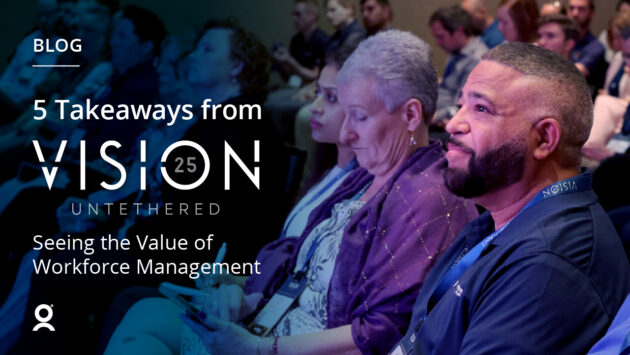“Is she asleep?”
“Yeah, she finally passed out.”
“I’m sorry, Jake. I should’ve picked her up on time, like I said I would.”
“It’s not your fault, Karen. I understand. Abby’s school understands. Work is work. What can we do?”
Karen stood up to make some tea, adding a lemon wedge for her sore throat.
“I’m exhausted,” she said.
“I know,” said Jake. “Me, too.”
Around the world, hourly employees are suffering.
After studying nearly 6,000 hourly retail workers, Kristen Harknett, an associate professor of sociology at Penn State, confirmed that unpredictable, unstable schedules are bad for employee health and well-being.
Her study asserts that erratic schedules cause harm and difficulty, particularly to working parents, who lose the ability to plan ahead.
Penn State: “Unpredictable, unstable schedules are bad for employee health and well-being.”
“If you have more advanced notice of your work schedule, then you’re less likely to report psychological distress, you’re less likely to report poor health, you’re less likely to report poor sleep quality,” Harknett says. “Simply having at least two weeks’ advanced notice is associated with all these benefits.”
Another report, by Human Impact Partners, corroborates the notion that unpredictable schedules cause “physical and mental health consequences for workers and their families.”
And these consequences are felt by employers, as well. They trickle down, affecting customers and, ultimately, business goals:
According to Gallup, unhealthy employees cost organizations $84B a year.
Gallup surveyed 94,000 workers with chronic health conditions (e.g., high blood pressure, high cholesterol, depression) and found that the total annual cost of their lost productivity totaled $84 billion.
If you employ hourly workers, you’re paying into that figure.
That said, if you employ salaried people, you’re also contributing. And salaried workers cost more than the digit on their paychecks: health insurance, retirement benefits, cell phones, bonuses, trainings. That’s why corporations proactively invest in “Health & Wellness” programs, which are designed to keep white-collar knowledge workers happy, healthy and, of course, productive.
It’s a big industry, actually: Every year, companies spend about $6 billion on massages, gym memberships, Fitbits, and morning yoga classes—among other “outside” perks—for their salaried guns.
Rarely, however, do you see a wellness program aimed at hourly workers, an inequality that comes down to ROI. And that begs the question: what do hourly employees need?
A Fitbit? A fifteen minute massage every Friday afternoon? Free snacks in the breakroom?
Sure, those are neat perks, but they’re not making it any easier to raise children. They’re not helping people sleep at night. They’re not giving employees their time and stability back, their routines back.
After all, how can anyone cultivate a routine when they don’t even know what tomorrow looks like?
The State of Compliance Report provides an overview of the workplace compliance laws and regulations that impacted U.S. and Canadian employers in 2023 while sharing insights on how to best prepare 2024.
This book will help you create a healthy, rewarding environment for the people that keep your company moving forward.
Workforce Management for the HR Leader’s Soul
Right now, around the world, a percentage of hourly workers are using workforce management software to enact Health-&-Wellness Scheduling—and it’s giving them back control.
It’s allowing them to pick up shifts when they want to and give shifts away when they need to. It’s showing them an airtight schedule, weeks in advance.
It’s a vehicle for work-life balance.
In fact, the department store Karen and Jake work for recently started using it:
“…can you pick Abby up after school next Tuesday?” said Jake.
“I have three night shifts in a row that week.”
“Of course, I can,” said Karen. “I’ll just trade that day away—two minutes.”
Imagine that.
Want healthy, engaged, productive employees?
Learn how it works.




